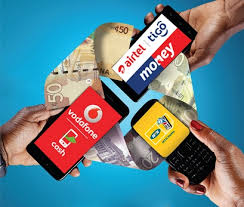Mobile payment is defined as non-cash transactions processed through mobile devices. It is arguably one of the most influential digital technologies with potential future business value.
Its rapid evolution and increasing diffusion have given significant opportunities for innovative companies to create new payment solutions and offer value-added services to their customers.
Mobile payment in Ghana is experiencing an increased adoption and usage among individuals, households, and corporate bodies due to its convenience and fastness. Again, mobile payment is changing the daily financial transactions of both consumers and merchants alike.
Available evidence suggests that the subscription of mobiles globally has exceeded seven billion, with an estimated 770 million to be in Africa alone. In Ghana, for example, mobile payments are the most prominent digital payment platform and have been recorded as the most popular means of sending, receiving money, and effecting payment.
For example, the report published by the Bank of Ghana on summary of the Economic and Financial Data for May2021 indicates that, total value of mobile money transactions in Ghana continues to rise. It increased from GH₵23.4 billion recorded in March 2019 to GH₵33.8 within the same period in 2020, indicating a percentage increase of more than 30 percent.
Additionally, the balance on float for all mobile money transactions, which stood at GH₵2.7 billion in March 2019, now stands at GH₵3.9 billion, in 2020 representing an increase of GH₵1.2 billion. The balance on float is the amount of mobile money cash that sits with the banks. The float boosts liquidity for banks.
The report further reveals that the total number of mobile money transactions also shot up from 156 million in March 2019 to 205 million in the same period in 2020. This means that mobile money transactions grew by approximately 49 percent over the twelve-month period from March 2019 to March 2020.
These volumes of transactions, given the estimated Ghanaian population of 30 million, show a very high penetration of mobile payments in the country at the moment. Along with solid internet penetration, a growing mobile payment culture facilitates the rapid growth of mobile payment usage.
Arguably, the impact of mobile payment adoption has significantly been noticed in sub-Saharan Africa (SSA). Primarily due to the lack of robust payment systems, weak institutional foundations, and the fact that mobile phones are becoming increasingly part of the everyday lives of the poor.
This situation is engendering hope that mobile payments have the strategic potential of meeting the financial service needs of the poor, enormous potential to introduce cashless payments and serve as a gap bridging mechanism for micro and small businesses to circumvent the national constraints to leverage mobile payment benefits for greater financial inclusion.
Essentially, mobile payment is making many waves across industries, such as banking, agriculture, insurance, health, and commerce. In commerce, for example, businesses are trying to leverage mobile payment to support new business models, enhance business transactions and transform market mechanisms to facilitate a new business climate.
For instance, some micro-businesses like retailers, eateries, fashion shops, taxi drivers, churches, mechanic shops, and many small scale service providers have strategically started to leverage mobile payment innovation for their businesses in Ghana. These micro and small businesses depend on the capacity of mobile payments to support a much cheaper and faster financial transaction.
Anecdotal evidence and a brief web investigation indicate that micro merchant firms are leveraging mobile payment to develops new market, business opportunities, improves consumer’s experience, and creates a different basis for competitive advantage.
The expanding significance of mobile payments services in micro- businesses is sparking discussions in the business circles and academia on how mobile payments’ potential can be strategically harnessed by small businesses in Ghana and other developing economies for competitive advantage.
In developing countries, the contribution of micro-businesses can not be underestimated. In Ghana, for instance, micro-businesses play a significant role in employment generation (predominantly female employment), contribute to task revenue, and facilitate distribution of goods and services, which contribute significantly to Ghana’s GDP.
Nevertheless, much of this money is unbanked, denying the government revenue that could be used for development purposes. The government can track the financial system and do better projects that create value for the vulnerable in society whilst it provides small businesses a way to achieve efficiency.
Mobile payments are beneficial to consumers and retailers alike, the use of mobile payments generates operational and strategic benefits which leads to transformation and innovation in brick and mortar sales. For instance, mobile payments make payments transactions more straightforward and faster, which saves time and effort.
Furthermore, mobile payments enable quick transactions in an environment with large payments volumes, saving operational turnaround time and ensuring productivity gains. Again, mobile payments allow organisations to achieve a competitive advantage through the efficient use of mobile payments for transactions.
Mobile payments hold the key to influencing positively to promote financial inclusion due to the high prevalence of mobile phone usage and limited access to financial systems by micro traders.
Also, mobile payment technologies allow users, especially micro traders, to strategically use their mobile phones to store value on an account linked to their handset, transfer funds to their suppliers and receive payments for their sales irrespective of their location and time, allowing payment transactions to be made in real-time. Additionally, mobile payments make it possible for users to access loans or insurance products.
The financial access gradually makes mobile payments one of the easiest means to promote financial inclusion in developing countries and revolutionise the world of e-commerce. Adoption and use of mobile payments have a potential impact on the livelihood of adopters. Due to the less expensive nature of mobile payments, micro-businesses can transfer a small amount of money and make payments at fewer fees to poor households. In addition to the cost-saving, mobile payments enable users to access financial services as a way of financial inclusion for the unbanked.
Nevertheless, micro-business still hesitates to adopt mobile payments due to the multi-faceted factors such as type of wireless technologies used, security and privacy, the players involved and their influencing business models, including consumer factors relating to interoperability, flexibility, ease-of-use and social marketing. It is vital for merchants to clearly understand the complexities of the critical dimensions of mobile payments to be sure their adoption of mobile payment is on the road to success or failure.
Among the issues to consider are; various mobile payment systems players, the mobile payment/billing methods, the numerous wireless technologies or infrastructure supporting these payment services, and the more recent developments in social marketing.
These multi-faceted dimensions of mobile payments call for guidance to merchants on the various mobile payment options that will help them adopt mobile payment methods to suit their requirements. Therefore, this writes up to seek to provide a strategic framework that will support merchants to adopt mobile payments successfully.
In addition to the complexities identified above, the merchant’s decision to adopt mobile payment is affected by several factors such as technical, business and social within the mobile payment market. Mobile payments are not just a new technology added to existing consumer networks but have their own set of historical and normative roots.
There are several mobile payment options available to merchants, including payment location (remote/ proximity), payment value (micro/macro amount,) charging method (post-paid pre-paid) and the associated security protocols. It is essential for merchants to review the various mobile payment options and adopt mobile payments suitable to their requirements.
First, the technology component is the various mobile payment solutions available in the market concerning their underlying wireless technologies and capabilities. Secondly, the business components take into consideration the different mobile payment solutions with the business players.
And finally, the social element concerns various stakeholders, including social marketing and feedback techniques for the successful adoption of the right mobile payment solution, considering its drivers and inhibitors derived from the technology and business components.
For merchants to successfully adopt mobile payments, they must follow three basic steps to make a more systematic review before considering adopting the type of mobile payments that will support their businesses and the everyday running of their business.
First Step: merchants must have the knowledge and identify all the mobile payment solutions in the market using a matrix to compare the wireless technologies and the payment methods they support.
The adoption of mobile payment for business is usually influenced by various decision criteria, including the type of payments a mobile solution supports, the costs involved, how efficient the transaction is in terms of speed and fault-tolerance, and the level of privacy and security provides.
For example, the merchant may evaluate the first Step by evaluating each solution option that supports them: Mobile banking (e.g. Access bank account, Conduct bank transactions, receive alerts, Receive statements, etc.) Mobile commerce (e.g. Remote payments, Proximity payments, etc.) Mobile money transfers (e.g. P2P money transfers, Airtime top-up, etc.)
This first Step is the technology components that merchants will have to evaluate. The technology component seeks to compare different payment solutions that various businesses and consumers could adopt based on the underlying factors associated with wireless technologies and payment methods.
Second Step: Merchants should identify all the stakeholders who play essential roles in providing mobile payment solutions—a matrix comparing all the key players and their support for successful mobile payment adoption. Merchants must be familiar or be aware of the kind of business their solution support and their stakeholder relationship with the banks to provide information on the type of business model they present to suit the business type.
Identifying the stakeholders will inform the kind of solution a merchant would want to adopt. For example, a service-type business could use mobile payment solutions for car park/library fee payment, or a merchant-type business could adopt these at retail point-of-sale (POS) terminals. The mobile payment solution is dependent on the type of business model adopted by the mobile payment solution.
For example, a network operator-centric business model may involve businesses and consumers tied up with the network service provider who takes up an aggregator role for billing and charging. On the other hand, in a payment service-centric business model, the payment service is offered by independent providers who make the mobile payment service available to mobile subscribers, as they would be in a commercial agreement with financial service providers and network service providers.
In such situations, users are required to subscribe with the network provider and the payment service provider and businesses are required to liaise with the payment service providers and the associated players such as financial service providers and consortiums. For example, if a merchant registers with the network provider, the merchant must register with the payment service provider.
Third Step: merchants should choose the mobile payment solution that will serve the objective of the business based. The merchant should use the list in the first Step above and the business model comparison in the Second Step. Businesses must request to trial the mobile payment system to receive feedback and comment in the initial system before merchants fully adopt the mobile payment for their businesses.
The decision making draws inputs and experiences gained during the trial period so that issues that arise during the trial period could be settled before the actual mobile payment adoption. In this Step, feedback from social media plays a significant role in identifying the drivers and inhibitors for each mobile payment solution. Due to the multi-faceted constricted nature of mobile payment adoption, it can be approached from different angles.
This write up approached it from four main angles based on the mobile payment players, payment methods, enabled wireless technologies and social marketing, and their influencing factors for a successful mobile payment adoption. A three-step strategic framework was suggested to evaluate these four angles in decision-making regarding mobile payments adoption. Such a framework would facilitate businesses to consider the different mobile payment solutions from technology, business, and social perspectives for successful adoption.
The writer is a PhD candidate at the University of Ghana Business School










